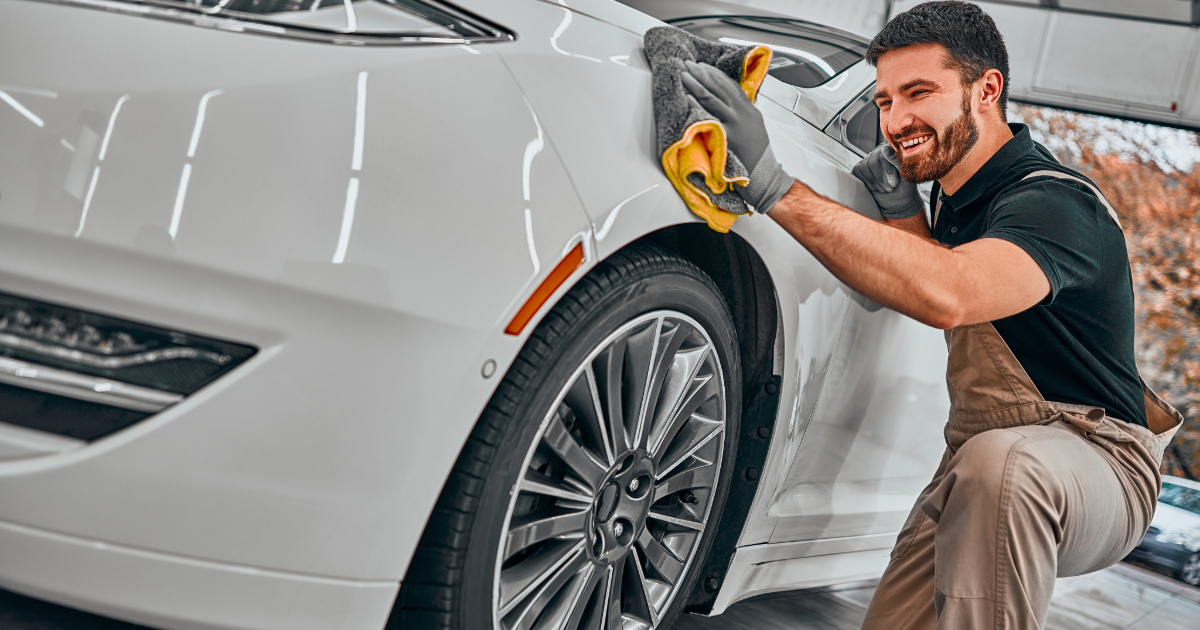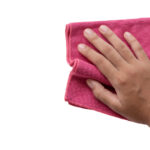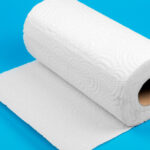A clay towel is a microfiber cloth that has been coated with a thin layer of clay compound.

It serves the same function as a traditional clay bar in removing bonded surface contaminants from vehicle paintwork, but offers some advantages in ease of use and reusability.
Why Use Clay Products
Your vehicle’s clear coat gets contaminated by road grime, brake dust, and other particles that embed themselves into the surface. Normal washing cannot remove these bonded contaminants. Using a clay product is essential to fully decontaminate the paint before applying waxes, sealants, or starting paint correction.
Clay bars, mitts, towels, and specialty spray-on products all serve to break down and whisk away stubborn particles that cling to the clear coat. Having options allows you to choose the right claying method for your preferences and detailing routine.
Key Takeaway: Claying removes stuck-on particles that washing misses, preparing your paint for protection and enhancement.
What Defines a Clay Towel
A clay towel consists of a microfiber base layered with a clay compound, often polymer clay. The microfiber backing makes it easier to handle than a bare clay bar. Clay towels can be rinsed and reused many times, while clay bars are single use.
Benefits of clay towels include:
- Faster process due to larger surface area
- Reusable even if dropped
- Often cheaper long-term
- No kneading required during use
Downsides can include:
- May not remove as much contamination as clay bars
- Harder to use on intricate or tight vehicle areas
- Higher chance of marring large sections if improperly lubed
How To Use a Clay Towel
Correct technique is vital to avoiding paint damage while claying. Here are the key steps:
- Wash and dry the vehicle to remove loose dirt
- Presoak the clay towel in a shampoo mixture
- Mist lubricant over a section of paint
- Gently glide the clay towel across the area
- Rinse towel regularly as you work
- Thoroughly rinse vehicle section when complete
- Dry with a clean microfiber before moving to the next section
Cautions when using and storing clay towels:
- Don’t tightly wring or squeeze
- Don’t store flat on the clay side
- Don’t submerge fully in liquid
- Don’t put away wet in a sealed container
Rinsing the clay towel often helps maximize its lifespan over many uses.
Clay Towel vs. Clay Bar
There is no definitively “better” option between clay towels and bars. Both offer effective paint decontamination through slightly different means.
Benefits of using a traditional clay bar include:
- Often better at removing really stubborn particles
- Allows meticulous cleaning of intricate crevices
- Gives a “bare-hands” tactile feel for monitoring slick/smooth areas
Comparative advantages of clay towels encompass:
- Much faster full vehicle application time
- Cost savings from reuse over multiple details
- Added insurance against dropped debris
- Larger size can benefit larger vehicle surfaces
The choice comes down to the user’s preferences and detailing scenarios. Clay towels make quicker work of routine jobs. Clay bars provide superior precision for show-ready finesse.
Proper Claying Technique
No matter which clay product you choose, using proper technique is vital to avoiding instilling deeper damage or marring into your vehicle’s paint.
Here are some key pointers:
- Always pre-wash. Remove loose contaminants first so that the clay stage just targets what is bonded on.
- Use plenty of lubricant. Whether a dedicated spray, waterless wash mix, or soapy water, lubricant lets particles glide away rather than grinding into the surface.
- Work in small sections. About 2 x 2 feet allows you to re-lube and monitor progress. Mark completed areas with sticker dots.
- Rinse debris frequently. Claying creates a lot of contamination buildup. Regularly rinse your towel or fold/re-knead clay bars.
- Be gentle. Let the clay compounds do the work. Very light pressure in straight lines often works best.
- Follow up with polish. Even if you see no marring, abrasives remove sensitive clearcoat layers. Polishing restores protection and clarity.
Maintaining Clay Towels
Special care for your clay towel helps it last many uses:
- Rinse thoroughly during and after jobs
- Hang to dry right side up on a towel hook
- Store in a breathable bag
- Check condition before reusing
- To revive dried clay, massage under running water
- When overly dirty, replace with a fresh towel
Following this clay towel care extends its working lifespan for cost-effective paint decontamination over repeated washes.
FAQs
Can a clay towel be used on glass or wheels?
Yes, clay towels are safe for decontaminating glass and wheels just like clay bars. Ensure you use enough lubricant. Wheels with textured finishes can quickly degrade towels.
How do you clean a dirty clay towel?
Spray your lubricant over the towel and gently wipe debris off with your fingers. For heavier soiling, the towel may need to be discarded and replaced. Never machine wash clay towels.
What lubricants can be used with clay towels?
Any clay lube will work. Soapy water mixes are fine. Some detailers use waterless wash products. More lubrication is generally better, just avoid sudsy cleaners that may break up the clay compound.
Do you need to prep the paint before claying?
It’s highly advised to start with a thorough wash to remove all loose contaminants first. This allows the claying step to just target the stuck-on particles that normal washing leaves behind.
Conclusion
Clay towels offer efficient removal of surface contaminants through their microfiber and clay compound construction.
Their ease of use, reuse, and handling benefits make them favored by many detailing enthusiasts despite sometimes lesser contamination removal capabilities compared to classic clay bars.
Proper selection, technique, and care maximize the durability and performance of either clay product.








